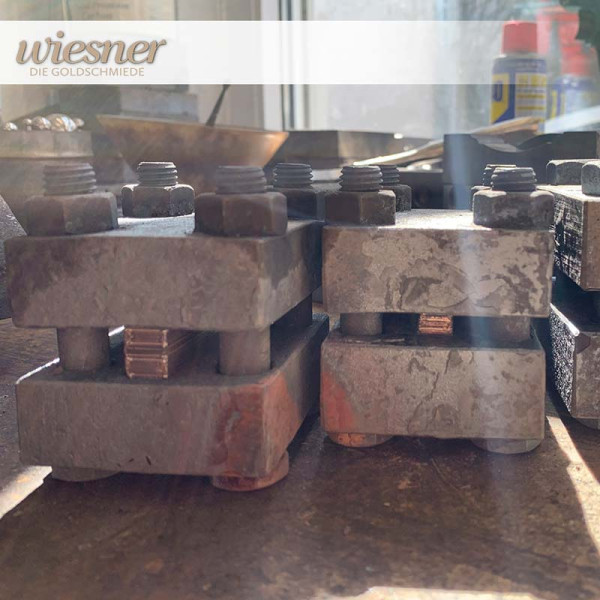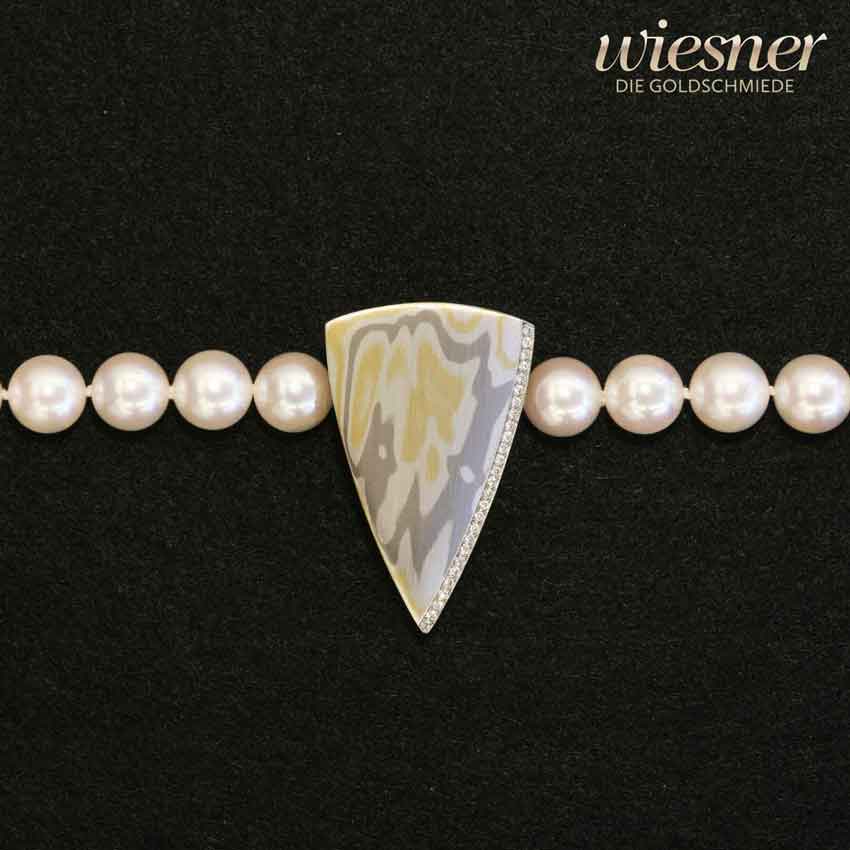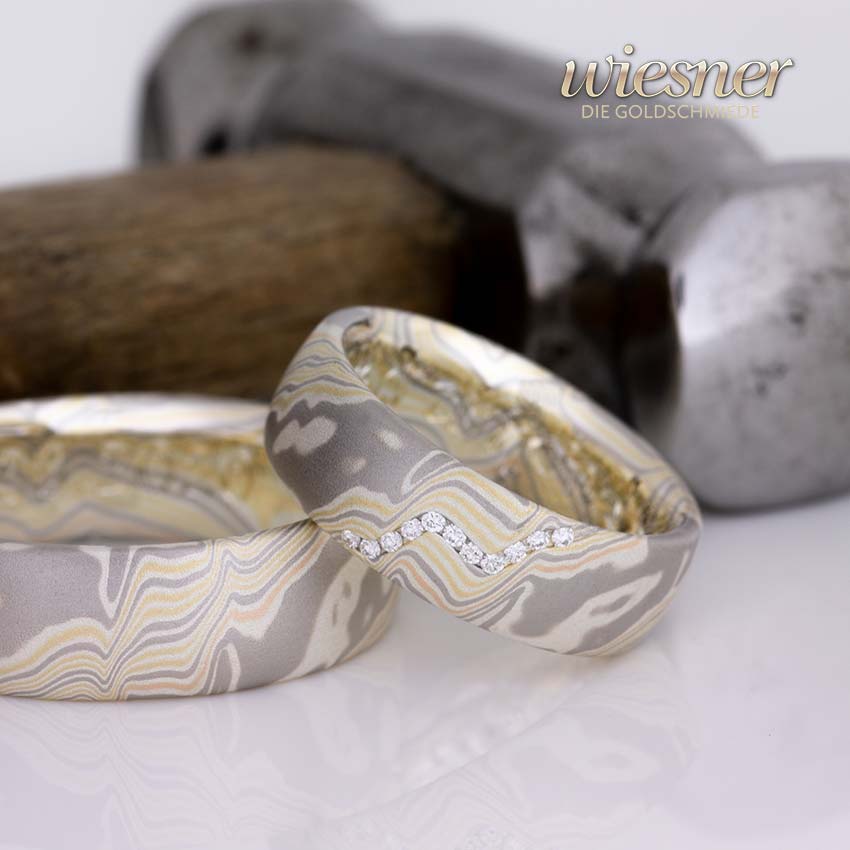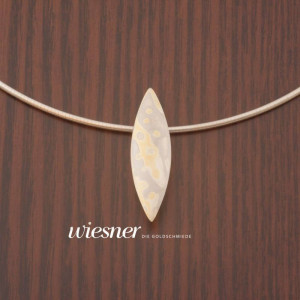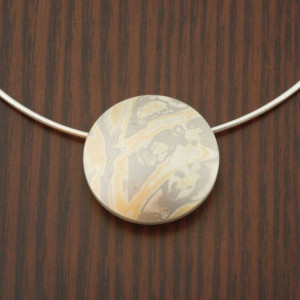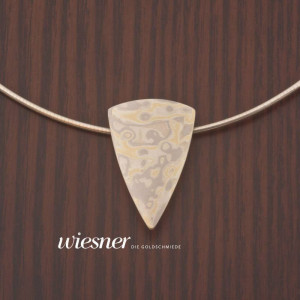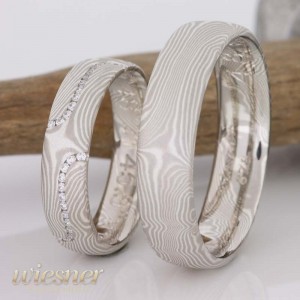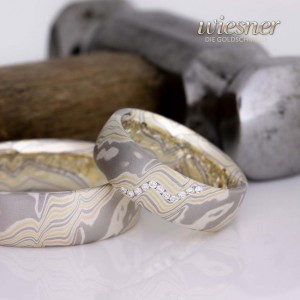Contents:
- What is Mokume Gane?
- Historical background
- Who invented it?
- Mokume Gane worldwide
- Mokume gane for wedding rings
- Suitable precious metals
- Frequently asked questions
What exactly is mokume gane?
A beautiful example of mokume gane as a sophisticated pearl clasp.
Mokume gane is an artistic forging technique from Japan in which several layers of metal are fused together and worked in such a way that wood-like grains are created. The result: unique patterns that can never be reproduced exactly. This technique is traditionally used to make jewelry, knives and decorative works of art - and is also used in the production of mokume gane rings.
Historical background
The roots of mokume gane go back to the 17th century. The technique was originally developed to create ornate decorations for katana sword handles. During the Edo period, Japanese blacksmiths perfected this method and used it to create not only weapons, but also pieces of jewelry that are both functional and aesthetically pleasing.
"Mokume gane embodies the Japanese aesthetic of beauty in simplicity and imperfection - wabi-sabi in metallic form."
The technique reached its heyday in the 19th century. To this day, it is regarded as an expression of the highest level of precision craftsmanship and artistic sophistication.
Who invented this technique in Japan?
The exact origin is not clearly documented, but according to tradition, the blacksmith Denbai Shoami was one of the first to practice mokume gane in the 17th century. He lived during the Edo period and was known for his innovative spirit. Even though no reliable records exist, his works are still highly valued today and form part of many museum collections.
Mokume Gane outside Japan
Today, mokume gane is no longer just a Japanese phenomenon. The technique has experienced a renaissance in North America and Europe. Many goldsmiths, designers and artisans have reinterpreted mokume gane. The knowledge is passed on in workshops and at art academies - and finds its place in modern jewelry collections as well as in unusual knife blades or design objects.
Mokume Gane for wedding rings
One of a kind: Mokume Gane rings from the "Tornillo" collection.
The forging technique is ideal for the production of wedding rings - not only because of its impressive appearance, but also because of its symbolism. The combination of different metals creates unique patterns - no two rings are the same. Mokume Gane rings are an expression of individuality and solidarity, making them ideal companions for a life together.
Precious metals for mokume gane wedding rings
Depending on the desired effect, different precious metals can be combined. The choice of metals not only influences the color spectrum, but also the hardness and maintenance requirements of the rings. The most common materials include
- White gold - bright, elegant and very durable
- Yellow gold - classic, warm and timeless
- Rose gold - modern, charming and romantic
- Platinum - exclusive, robust and very durable
- Palladium - rare, bright white and light
Silver and copper or more exotic alloys such as shakudo or shibuichi are also used. The layering and forging of these metals creates fascinating color gradients and textures that give each ring an unmistakable radiance.
Frequently asked questions about mokume gane
- How durable are mokume gane wedding rings?
- Mokume Gane rings are very durable. The durability depends on the chosen metal mix - metals such as platinum or palladium offer particularly high resistance.
- Does the pattern fade over time?
- No - the pattern remains intact as it is created by genuine material fusion. The surface can develop a patina over time, which gives the jewelry additional character.
- Can Mokume Gane rings be engraved?
- Yes, engraving on the inside is no problem and is very popular for wedding rings.
- How much do mokume gane rings cost?
- Prices vary depending on the material and design. Handmade unique pieces usually start at around €1,000 per ring.

